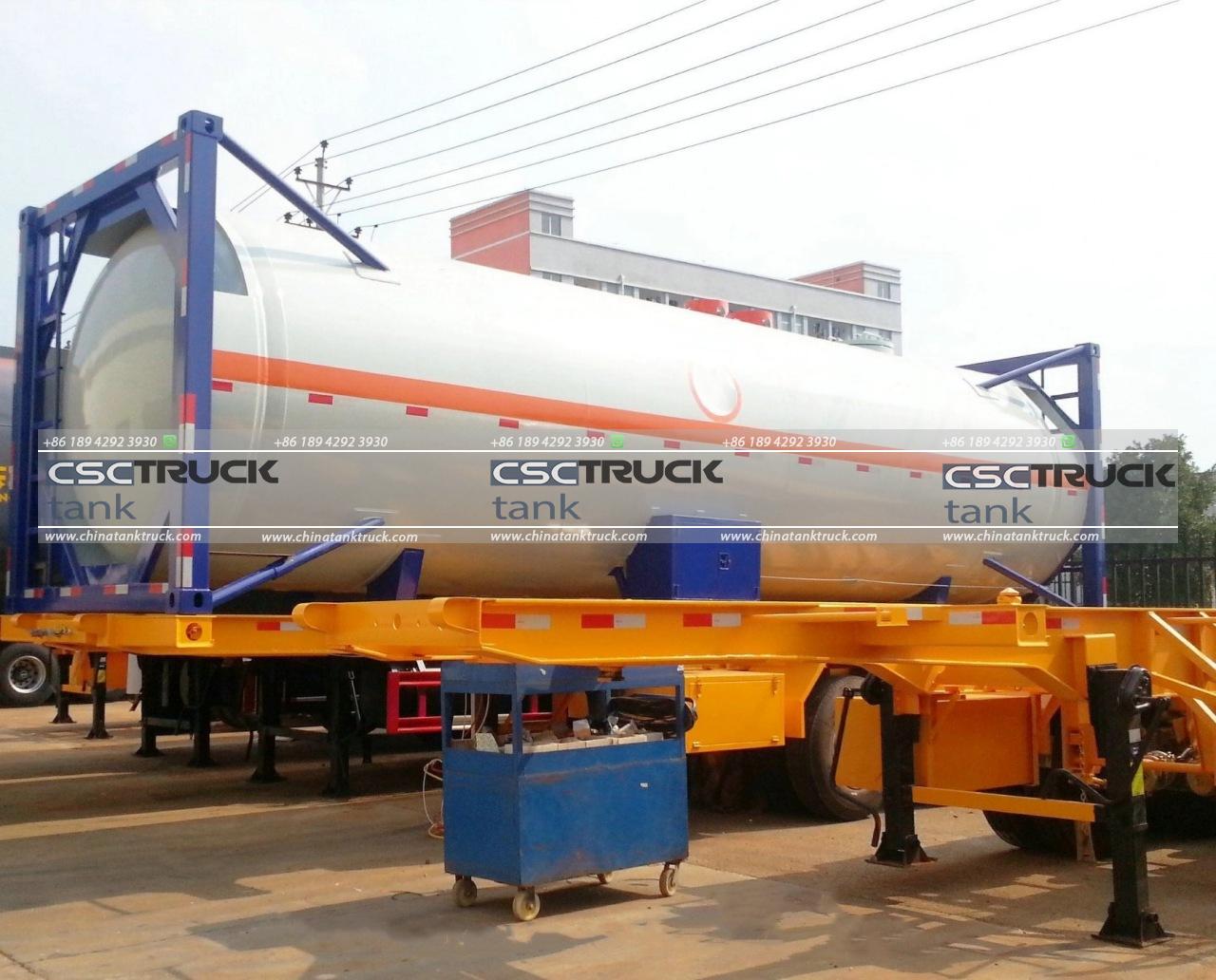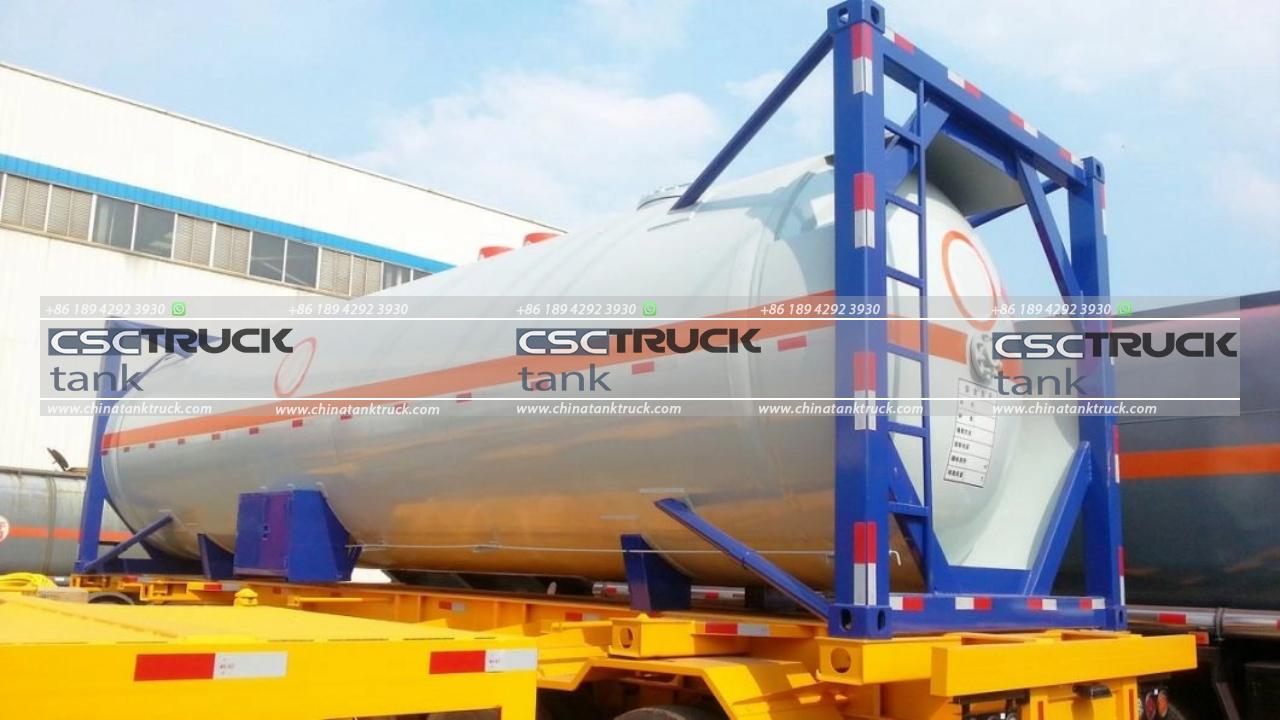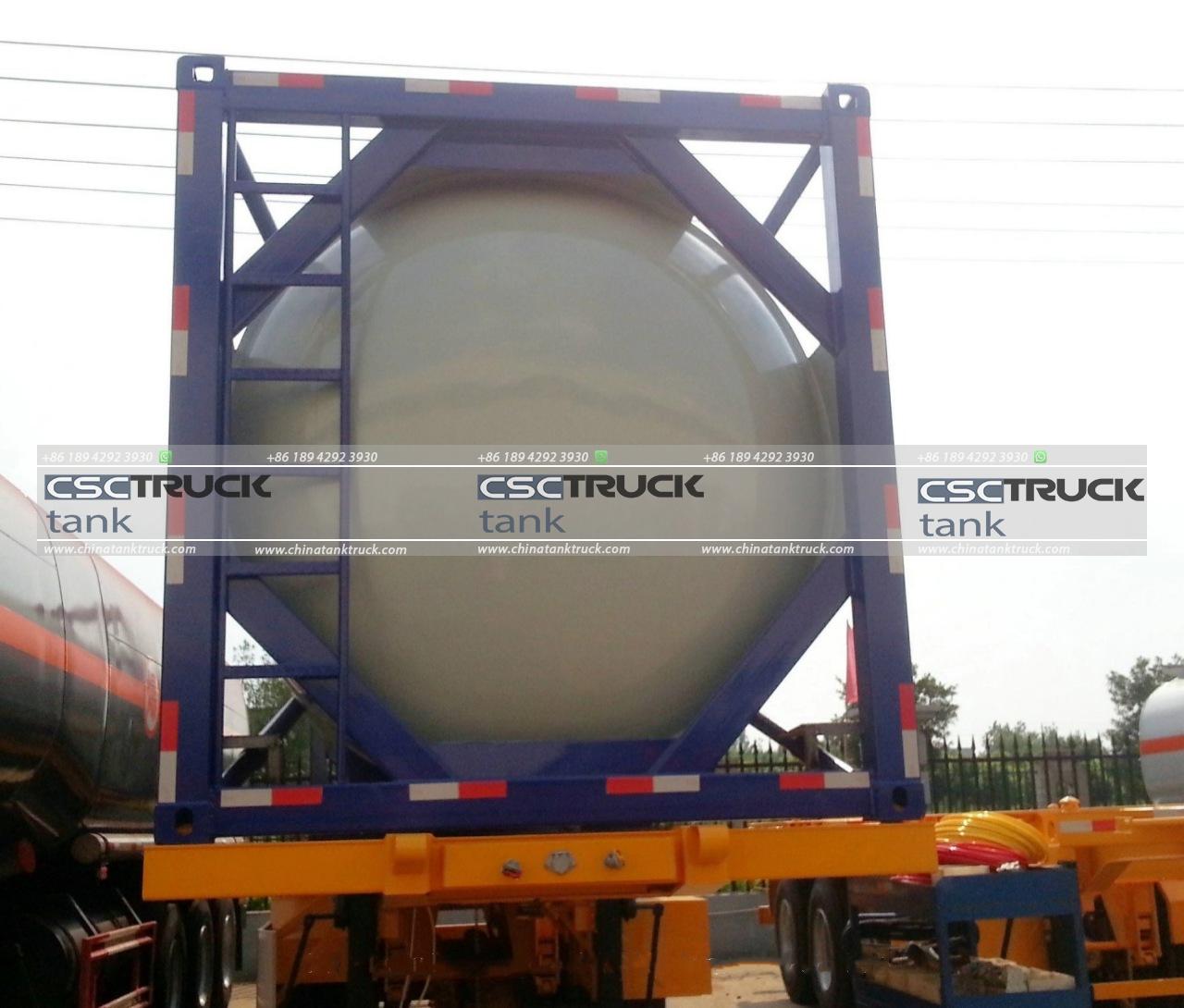What is the Difference Between an ISO Tank and a Road Tanker?
In the world of liquid transportation, especially for hazardous chemicals, food products, and gases, 2 primary types of tanks are widely used: ISO tanks and road tankers. Both are integral to the logistics and supply chain of various industries, but they serve different purposes and operate under varying constraints. This article explores the key differences between ISO tanks and road tankers, helping you understand their unique roles in transportation.
1. Definition and Overview
ISO Tank
An ISO tank is a type of storage tank specifically designed to carry liquids in bulk. These tanks are built to ISO (International Organization for Standardization) standards, which means they are designed to be compatible with various forms of transportation, including ships, railroads, and trucks. The ISO standard ensures that the tanks can be safely stacked and handled in intermodal freight transport.
ISO tanks are cylindrical, made from stainless steel, and surrounded by a layer of insulation to maintain the temperature of the liquid they are carrying. They are placed within a frame measuring about 6.05 meters (20 feet) in length, which conforms to standard container sizes used in the shipping industry.
Road Tanker
A road tanker is a large, vehicle-mounted tank designed to transport liquids or gases specifically on roadways. These tanks are directly attached to a truck or a trailer chassis, and they vary in size and shape depending on their use. Unlike ISO tanks, road tankers are typically used for short-haul or domestic transportation, delivering products such as gasoline, milk, chemicals, or even water over relatively short distances.
While both ISO tanks and road tankers serve similar functions, transporting bulk liquids, they differ in design, application, and their role in global logistics.

2. Design and Construction
ISO Tank Construction
ISO tanks are designed to meet the rigorous standards set by the International Organization for Standardization. This guarantees their structural integrity and safety when handling hazardous or sensitive liquids. ISO tanks are typically constructed from high-grade stainless steel, which makes them resistant to corrosion and suited for carrying a wide range of chemicals and gases, including hazardous materials. The frame around the tank provides protection and allows the tank to be securely attached to various modes of transport, such as ships or rail vehicles.
The tanks are also highly durable and designed to withstand extreme temperatures and pressures, which is essential for certain hazardous or sensitive products like cryogenic gases. Additionally, ISO tanks are usually insulated to protect the contents from temperature fluctuations during transit.
ISO tanks also come in various designs to accommodate different types of cargo, including pressurized tanks for gases, refrigerated tanks for perishable liquids, and tanks equipped with heating elements to maintain a stable temperature for viscous liquids.
Road Tanker Construction
Road tankers, in contrast, are designed primarily for road transportation and have more variability in their construction depending on the type of liquid or gas they are carrying. While many road tankers are also made from stainless steel, they often do not have the same level of insulation or durability as ISO tanks, as they are not required to endure the same environmental stressors (e.g., sea transport, and long-term storage).
Road tankers typically have a cylindrical shape and are directly mounted onto a truck or trailer. Their size varies depending on their intended load and the regulations of the country in which they operate. For example, a road tanker carrying fuel may have several compartments to transport different grades of gasoline or diesel. Similarly, food-grade tankers may have multiple sections to prevent cross-contamination between different liquids, such as milk and fruit juice.
Because road tankers are specifically designed for road transport, they are often more aerodynamic to reduce fuel consumption and ensure stability during high-speed travel.
3. Usage and Applications
ISO Tank Usage
ISO tanks are the go-to choice for international transportation of bulk liquids. Their design makes them intermodal, meaning they can easily transition between different forms of transportation—road, rail, and sea—without the need to transfer the liquid into different containers. This makes them ideal for global logistics, where cargo might be transported over long distances and via multiple modes of transport.
ISO tanks are often used to transport a wide range of products, including:
– Hazardous chemicals (e.g., acids, solvents, and petroleum products)
– Food-grade liquids (e.g., oils, wines, fruit juices)
– Cryogenic liquids (e.g., liquid nitrogen, liquid oxygen)
– Gases (e.g., propane, butane)
ISO tanks are particularly useful in industries that require safe, reliable, and efficient transportation of hazardous materials. Their robust construction and safety features (such as pressure release valves) make them one of the safest methods for transporting dangerous liquids.
Road Tanker Usage
Road tankers are predominantly used for domestic transportation. Because they are not subject to the same stringent international regulations as ISO tanks, they are more flexible in terms of size and configuration, making them better suited for short-haul deliveries.
Common applications for road tankers include:
– Fuel transportation: Gasoline and diesel are often delivered to fuel stations using road tankers. These tanks are usually divided into compartments to allow for the transportation of different fuel grades.
– Food and beverage: Road tankers are commonly used to transport bulk quantities of milk, water, and other food-grade liquids. These tanks are often made from stainless steel to ensure cleanliness and prevent contamination.
– Chemical transportation: Similar to ISO tanks, road tankers are also used to transport chemicals, although typically over shorter distances. For example, a chemical manufacturer might use road tankers to deliver products to local customers or distribution centers.
– Water transportation: In areas with limited access to water, road tankers are often used to supply potable water to rural or remote locations.

4. Regulations and Safety
ISO Tank Regulations
ISO tanks are subject to stringent international regulations, especially when transporting hazardous materials. These tanks must adhere to standards set by the International Maritime Organization (IMO), the International Rail Transport Committee (CIT), and other regulatory bodies depending on the country of operation. Safety features such as pressure relief valves, secure fittings, and insulation are mandatory for ISO tanks carrying volatile substances.
ISO tanks also have to be inspected and certified at regular intervals to ensure they remain in compliance with these international standards. The tanks are typically inspected every 2 and a half years, with a more thorough inspection conducted every five years.
Road Tanker Regulations
Road tankers are subject to domestic regulations, which can vary significantly between countries. In most regions, road tankers that transport hazardous materials must adhere to strict safety guidelines, including the use of double-walled tanks and safety valves. However, road tankers are generally not subject to the same rigorous inspections as ISO tanks unless they are transporting hazardous substances.
Moreover, road tanker operators must comply with road safety laws, including weight limits, speed regulations, and driver qualifications, to ensure the safe transport of cargo.
5. Key Differences: Summary
To summarize, ISO tanks and road tankers differ in several key areas:
– Design: ISO tanks are built to international standards, making them intermodal, while road tankers are designed for road transport and have more flexibility in size and shape.
– Usage: ISO tanks are used for international shipping and intermodal transport, whereas road tankers are typically used for domestic, short-haul deliveries.
– Durability: ISO tanks are generally more robust, and designed to withstand harsh conditions, while road tankers are optimized for ease of movement on roads.
– Regulations: ISO tanks are subject to more stringent international regulations, while road tankers must comply with local road and safety laws.
Each tank type has its strengths, and the choice between the 2 often depends on the specific requirements of the cargo and the distance over which it needs to be transported.


